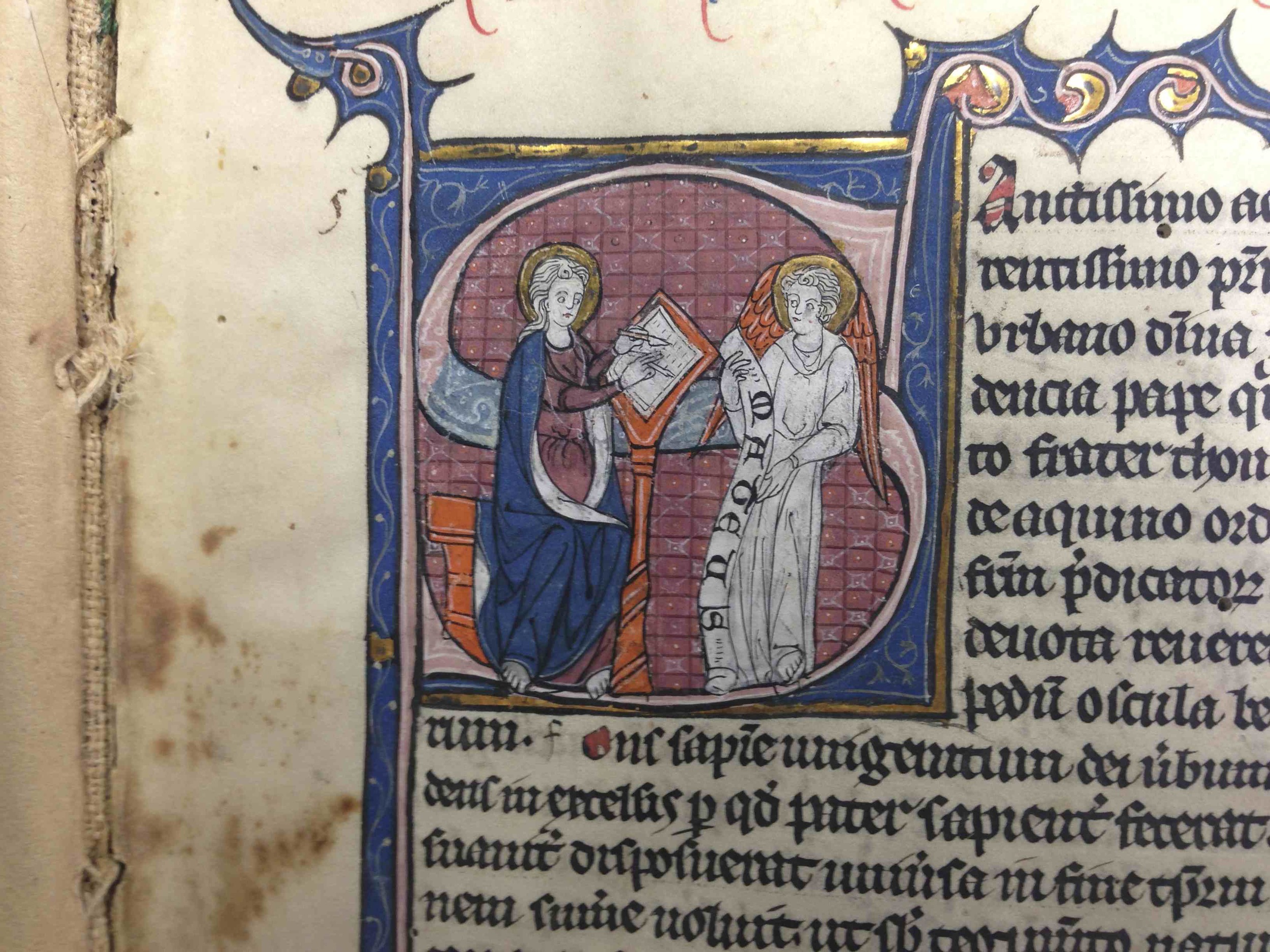 When my beloved teacher, James A. Weisheipl, OP, wrote his Friar Thomas d’Aquino back in 1974 he contended that Thomas Aquinas’s earliest scripture commentaries were cursory readings on Isaiah, Jeremiah, and Lamentations done while Thomas was with St. Albert the Great in Cologne, in the period 1248-1252. For Weisheipl these early works and their supposed sterilitas doctrinae were not the product of the precocious bachelor of the Sentences doing his work in Paris from 1252-1256, but were better considered the work of a talented young Dominican in St. Albert’s retinue in Cologne, a baccalaureus biblicus—even though no contemporary witness ever said that Thomas lectured on the Bible, even cursorie, while with Albert in Cologne. Besides, as the “dumb ox” (bos mutus) story indicated, Thomas was just too smart to have been with Albert only as a student or even as an—gasp!—assistant.
When my beloved teacher, James A. Weisheipl, OP, wrote his Friar Thomas d’Aquino back in 1974 he contended that Thomas Aquinas’s earliest scripture commentaries were cursory readings on Isaiah, Jeremiah, and Lamentations done while Thomas was with St. Albert the Great in Cologne, in the period 1248-1252. For Weisheipl these early works and their supposed sterilitas doctrinae were not the product of the precocious bachelor of the Sentences doing his work in Paris from 1252-1256, but were better considered the work of a talented young Dominican in St. Albert’s retinue in Cologne, a baccalaureus biblicus—even though no contemporary witness ever said that Thomas lectured on the Bible, even cursorie, while with Albert in Cologne. Besides, as the “dumb ox” (bos mutus) story indicated, Thomas was just too smart to have been with Albert only as a student or even as an—gasp!—assistant.
Or, as Fr Dewan put it to me once, “Fr Weisheipl couldn’t imagine that Thomas was ever Albert’s lackey”!
As it happens, in discoveries made this past decade it is now pretty clear that Thomas was indeed an assistant to St. Albert, doing some legwork so that Albert could have the best text available as he produced his commentaries on the works of Pseudo-Dionysius (a copy of whose Albertine commentaries we have in Thomas’s own autograph). In 2005 Maria Burger published some of the research she conducted as part of the Cologne edition of St. Albert’s works. She found a manuscript from Cologne’s Cathedral church library (Codex 30) that contained an 11th-century copy of the works of Pseudo-Dionysius, running the gamut from the Celestial Hierarchy to the Divine Names. But found in the margins and between the lines of this 11th-century hand were notes written in the telltale littera illegibilis of the young Thomas Aquinas. It turns out that his task had been to compare the Latin text found in Codex 30 (which contained the original Eriugena translation) with Eriugena’s revised translation and with John the Saracen’s translation—all of which Thomas did with diligence. As Burger showed in her original article (PDF), Albert then used Thomas’s marginal and interlinear notes in the course of composing his commentaries on Pseudo-Dionysius.
I am looking to see whether I can make available the English translation of her article (which appeared just recently in “Thomas Aquinas’s Glosses on the Dionysius Commentaries of Albert the Great in Codex 30 of the Cologne Cathedral Library,” in Via Alberti Texte – Quellen – Interpretationen [Münster: Aschendorff, 2009] 561-582). Here is the abstract from that latter article:
Albertus Magnus commented on the works of Pseudo-Dionysius the Areopagite in the years 1248–1250. The bases for these commentaries were the Latin translations by John Scotus Eriugena and John Sarracenus. Codex 30 of the Dombibliothek in Cologne conveys the Dionysius text in an older version of the Eriugena translation that Albert had evidently employed for purpose of comparison. Maria Burger finds numerous interlinear and marginal entries in this codex that, on the basis of careful handwriting analysis, can be assigned to Thomas Aquinas. He was Albert’s student and assistant in Cologne at that time and prepared a copy of the entire text in his own hand which is to this day preserved in the manuscript Naples, Biblioteca Nazionale I B 54. For this reason it is possible to make a more precise comparison of the entries in Codex 30 with Thomas’ handwriting. In addition, the marginalia in the Cologne Codex permit a more exact dating of Albert’s commentary on De caelesti hierarchia, the text with which the corpus of commentaries begins.
The people in Cologne have placed hi-res images of Codex 30, among others, available on a website devoted to church manuscripts from Cologne (link to main site). If you’d like to see some folios, click here, and then scoot ahead to, say, folio 35r, and hunt around from there (note that the images come in three sizes, the highest resolution of which zooms in tremendously).
So it does seem that Thomas was a trusted assistant—hardly a lackey—to St. Albert.
PS: Adriano Oliva dealt with Weisheipl’s dating of the cursory biblical works with great care in his Les débuts de l’enseignement de Thomas d’Aquin et sa conception de la Sacra doctrina (Paris: J. Vrin, 2006), 207-224. The three commentaries, Isaiah, Jeremiah, and Lamentations, should be dated to Paris in the early 1250’s (most likely starting around 1252).





